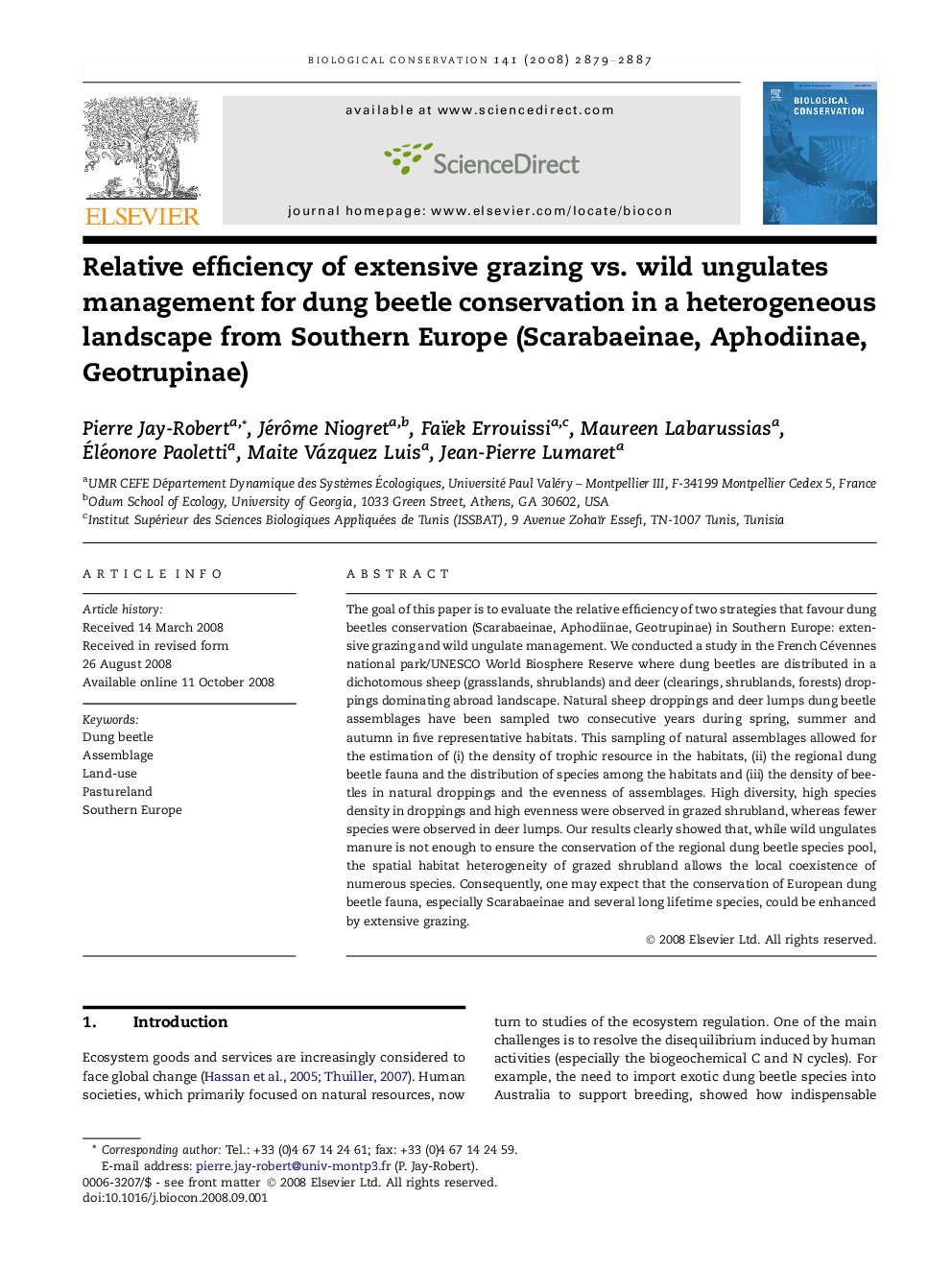| Article ID | Journal | Published Year | Pages | File Type |
|---|---|---|---|---|
| 4386674 | Biological Conservation | 2008 | 9 Pages |
The goal of this paper is to evaluate the relative efficiency of two strategies that favour dung beetles conservation (Scarabaeinae, Aphodiinae, Geotrupinae) in Southern Europe: extensive grazing and wild ungulate management. We conducted a study in the French Cévennes national park/UNESCO World Biosphere Reserve where dung beetles are distributed in a dichotomous sheep (grasslands, shrublands) and deer (clearings, shrublands, forests) droppings dominating abroad landscape. Natural sheep droppings and deer lumps dung beetle assemblages have been sampled two consecutive years during spring, summer and autumn in five representative habitats. This sampling of natural assemblages allowed for the estimation of (i) the density of trophic resource in the habitats, (ii) the regional dung beetle fauna and the distribution of species among the habitats and (iii) the density of beetles in natural droppings and the evenness of assemblages. High diversity, high species density in droppings and high evenness were observed in grazed shrubland, whereas fewer species were observed in deer lumps. Our results clearly showed that, while wild ungulates manure is not enough to ensure the conservation of the regional dung beetle species pool, the spatial habitat heterogeneity of grazed shrubland allows the local coexistence of numerous species. Consequently, one may expect that the conservation of European dung beetle fauna, especially Scarabaeinae and several long lifetime species, could be enhanced by extensive grazing.
